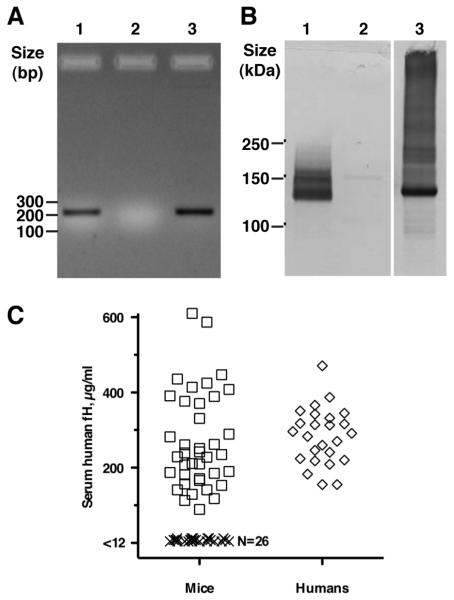Figure 4.
Generation of human factor H transgenic mice. A. Identification of human factor H transgenic mice by PCR analysis of genomic DNA from tails. Amplified product (232 bp) was from human factor H transgenic mice (lane 1), wild-type mice (lane 2), and plasmid containing human factor H cDNA (lane 3). B. Human factor H detected in sera from transgenic mice. Human fH visualized by Western blotting. Serum from BALB/c mice that expressed human fH (Lane 1), wild-type BALB/c mice negative for human fH (Lane 2), and normal human serum (Lane 3) were separated on a 4-12% polyacrylamide gel by electrophoresis; proteins were transferred to a PVDF membrane. Membranes were probed with affinity isolated goat anti-human fH (Complement Technology Inc., Tyler, TX) that recognized human, but not mouse, fH (48). C. Human serum fH quantification by ELISA. Each individual serum sample is represented by a single data point of the mean concentration from two to three independent measurements. Positive mice (square symbols, N=39) had human fH concentrations >90 μg/ml and negative mice (X symbols, N=26) had concentrations <12 μg/ml, which was the lower limit of detection in the assay. For comparison, concentrations of human fH were measured in stored sera from 25 healthy adult humans (diamond symbols).

